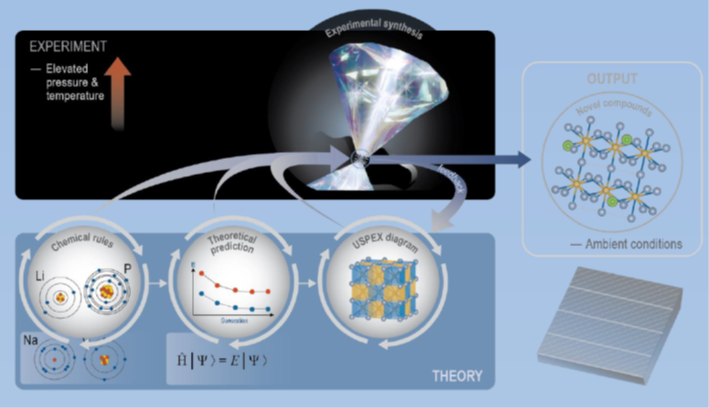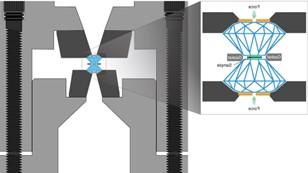The next generation of lithium-ion batteries (LIBs) is directly related to the challenging effort of finding suitable anode materials that exhibit high specific capacity, small volumetric expansion while also resilient to electrochemical degradation during lithiation. Phosphorus (P) was proposed as a promising alternative to Si (which swells over time and thus affects the lifetime of the battery) or graphite (which has a low specific capacity) for anode material used in LIBs that can also improve their performance. Additionally, P-based anodes do not have the major shortcomings of conventional anode materials (silicon and graphite) in sodium ion batteries (NIBs), and thus may facilitate the practical realization of these types of batteries, which are a promising alternative to LIBs.
Li3P and Na3P are potentially promising alternatives to conventional LIB anode materials. Successful formation of such materials can be the basis of a major breakthrough in the field. Understanding the reaction pathways between Li/Na and P is key to controlling P-based anode synthesis.
LLNL inventors have devised a solely pressure-based method for producing Li3P and Na3P using a diamond anvil cell at room temperature. By applying relatively low pressure (<1GPa) to elemental mixtures of lithium / phosphorous and sodium / phosphorous and LLNL researchers were able to synthesize lithium- and sodium-rich phosphorous compounds (Li3P and Na3P), respectively.
Caption: left image - schematic outlining how diamond anvils are used for synthesis of novel compounds using only applied pressure; right image - diamond anvil graphic
Leversee, River A., Rode, Kristen, Greenberg, Eran, Prakapenka, Vitali B., Smith, Jesse S., Kunz, Martin, Pickard, Chris J., & Stavrou, Elissaios. High pressure chemical reactivity and structural study of the Na–P and Li–P systems. United States. https://doi.org/10.1039/D0TA08563D
- This synthesis method bypasses expensive and complicated conventional chemistry synthesis pathways.
- The synthesis conditions (relatively low pressure and room temperature) are compatible with large volume presses that are ubiquitous in industry, thus an easy synthesis scale up can be foreseen.
- Next generation lithium-ion batteries (LIBs).
- Next generation sodium ion batteries (NIBs).
- New low pressure and temperature inorganic synthesis pathways.
Current stage of technology development: TRL 2
LLNL has filed for patent protection on this invention.
U.S. Patent Application 2021/0043933, Synthesis of Alkali Metal-Based Phosphorous Compounds Using a Lower Pressure, 2/11/2021.



